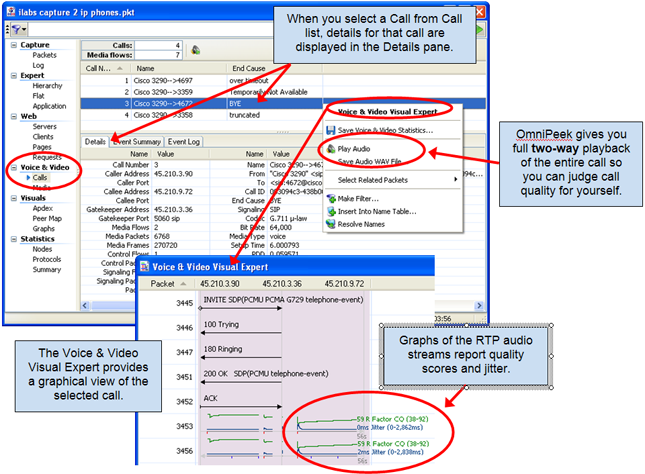Jitter Bells, Jitter Bells, Jitter All The Way!
Jeff Trawick, WildPackets Professional Services
More and more companies are finally deciding to retire their aged phone systems in favor of Voice over IP, so donít be surprised if the boss puts a VoIP project under your IT tree this year. While VoIP does offer many economic and operational advantages over traditional telephone technology, it also comes bearing gifts of latency, packet loss, and jitter. Some folks like to get puzzles as gifts, but Iím not sure these are the types of brainteasers you really want to battle for fun! When jitter bells start ringing in your network, rely on the new features in OmniPeek version 5.1 to help you isolate and solve the problem.
Jitter is probably the most common factor affecting VoIP quality. By definition, jitter is simply variations in the time it takes to deliver audio packets. For good voice quality, we need voice packets to arrive on a rigid schedule Ė one about every 20 milliseconds in most systems (depending on the codec). However, varying network performance may either speed up or delay delivery, with an emphasis on delay. Although VoIP devices use jitter buffers to help smooth packet influx, the buffer can only do so much before we begin to hear static, dropped syllables, or even more severe quality degradation. When users complain about poor quality, OmniPeek can provide detailed insight into individual calls, as shown below.

OmniPeekís enhanced VoIP and video features really simplify baselining and troubleshooting for these technologies. So donít let the jitter grinch steal your joy in VoIP. Instead, OmniPeek can have you dashing through these issues and laughing all the way! OmniPeek, OmniPeek, Omni all the way! Oh, what fun it is to VoIP when jitterís gone away!!!
Have a great holiday season!